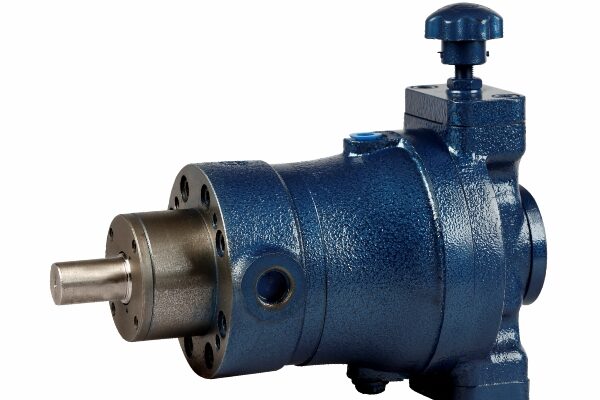Piston pumps play a crucial role in various industrial applications, from manufacturing and agriculture to oil and gas. These reliable workhorses are responsible for efficiently transferring fluids under pressure, making them essential components in many operations. However, like any machinery, piston pump require regular maintenance to ensure optimal performance and extend their lifespan. In this article, we’ll delve into the fundamentals of piston pump maintenance, providing you with proactive steps to keep your equipment running smoothly for the long haul.
Establish a Regular Inspection Routine:
Regular inspections are the cornerstone of effective piston pump maintenance. Establishing a routine for visual checks and assessments can help identify potential issues before they escalate. During these inspections, pay attention to any unusual sounds, vibrations, or leaks. Inspect the pump’s seals, connections, and mounting points to ensure everything is secure. Catching and addressing minor issues early can prevent more significant problems down the line.
Lubrication is Key:
Proper lubrication is crucial for the smooth operation of piston pumps. Make sure to follow the manufacturer’s guidelines regarding the type and amount of lubricant required. Regularly check and change the oil to maintain optimal viscosity. Inadequate lubrication can lead to increased friction, wear, and overheating, significantly impacting the pump’s efficiency and lifespan. Establish a lubrication schedule and adhere to it diligently.
Monitor Fluid Contamination:
The fluid being pumped can introduce contaminants that may compromise the piston pump’s performance. Regularly monitor the cleanliness of the fluid and implement filtration systems if necessary. Contaminants like dirt, debris, or water can lead to premature wear and tear, reducing the pump’s efficiency. By maintaining fluid cleanliness, you not only extend the pump’s life but also enhance the overall reliability of your system.
Inspect and Replace Seals Regularly:
Seals play a critical role in preventing leaks and maintaining pressure within the piston pump. Over time, seals can wear out or become damaged, leading to fluid leakage and reduced performance. Regularly inspect the seals and replace them as needed. It’s a small proactive step that can prevent major issues and ensure the pump operates at its optimum capacity.
Check for Pump Alignment:
Misalignment can lead to excessive wear on the piston pump components. Ensure that the pump is correctly aligned with the drive system and other connected equipment. Misalignment can cause increased vibration and stress on the pump, potentially leading to premature failure. Regularly check and correct any misalignment issues to ensure the longevity of your piston pump.
Temperature and Pressure Monitoring:
Monitoring operating temperatures and pressures is essential for preventing overheating and system failures. Excessive heat can degrade lubricants and cause seals to fail. Implement temperature and pressure sensors to continuously monitor the pump’s conditions. If the pump operates outside the recommended parameters, take corrective action promptly to avoid potential damage.
Educate Your Maintenance Team:
A well-informed maintenance team is crucial for the success of any proactive maintenance program. Ensure that your team is trained on the specific requirements of the piston pump you’re using. Provide them with the necessary tools and resources to perform routine inspections and address maintenance tasks. Regular training sessions can keep your team up-to-date with the latest industry best practices and ensure they are well-equipped to handle any maintenance challenges.
Address Wear and Tear Promptly:
Wear and tear are inevitable in any mechanical system, and piston pumps are no exception. Regularly monitor the pump components for signs of wear, such as scoring or pitting. Address any wear-related issues promptly by replacing worn-out parts. Ignoring signs of wear can lead to more severe damage and result in costly repairs or pump replacements.
Keep Detailed Records:
Maintaining detailed records of your piston pump’s maintenance history is invaluable. Document every inspection, repair, and part replacement. This historical data can help identify patterns, predict potential issues, and streamline future maintenance efforts. It also serves as a reference for troubleshooting and can be valuable information for manufacturers or service providers when seeking technical support.
Engage with Manufacturer Recommendations:
Manufacturers provide specific guidelines for the maintenance and operation of their piston pumps. It’s essential to familiarize yourself with these recommendations and incorporate them into your maintenance routine. Following manufacturer guidelines ensures that you are taking the most effective and appropriate measures to care for your equipment.
Conclusion:
Proactive piston pump maintenance is the key to ensuring long-term performance and reliability. By establishing a regular inspection routine, prioritizing lubrication, monitoring fluid cleanliness, inspecting and replacing seals, checking for pump alignment, monitoring temperature and pressure, educating your maintenance team, addressing wear and tear promptly, keeping detailed records, and following manufacturer recommendations, you can maximize the lifespan of your piston pump and minimize the risk of unexpected downtime. A well-maintained piston pump not only saves on repair costs but also contributes to the overall efficiency and productivity of your operations.












